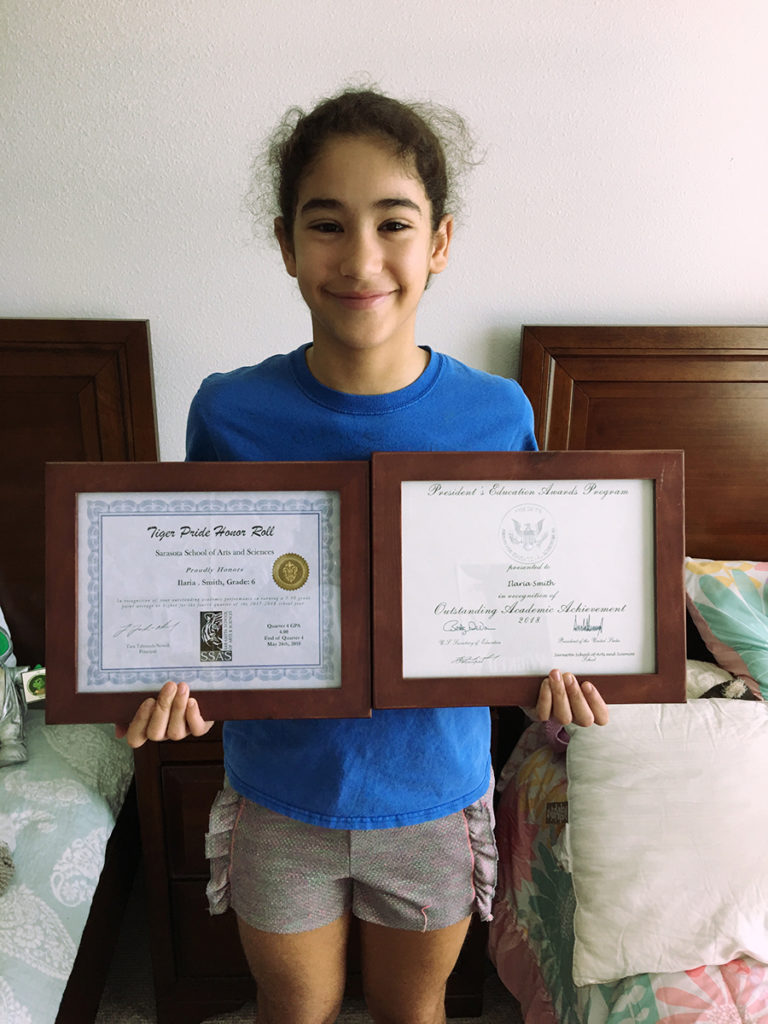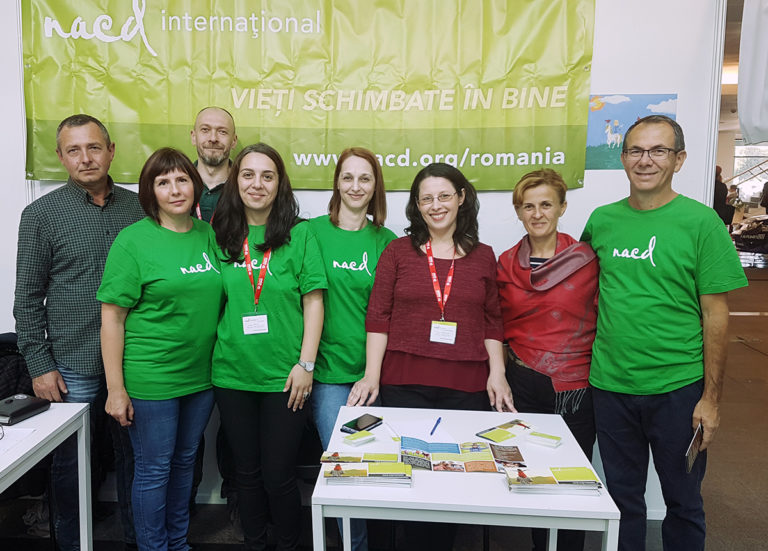NACD Targeted Home-Based Education: The Vision and the Plan
by Bob Doman
 We are often asked, “What does a day doing NACD Home-Based Education look like?” Let’s see if we can help you get the picture. The truth is, the picture looks different for every family and almost constantly changes. Every child and every family are different and so are most days. A typical day for a child with a brain injury is going to look dramatically different from that of a child on the autism spectrum, as it is from a child with a behavior/compliance issue, or a learning or attention problem, or a typical child. And the typical day of a preschool child is much different from that of a teen. The other significant variables involve the family’s situation. Who is home and how much time do they have to assist? Is mom home, does she have the day “free,” or is she working from home for part of the day? Is Dad available, or Grandmother or Aunt Susie? The nice thing about creating Targeted Home-Based Developmental and Educational programs is that each and every program is designed and modified based on the child’s and family’s needs. There is nothing close to one-size fits all anything. In fact, NACD Home-Based Educational programs don’t even need to be accomplished at home. More than a year of each of my two sons’ NACD Home-Based Educations were conducted at our NACD offices.
We are often asked, “What does a day doing NACD Home-Based Education look like?” Let’s see if we can help you get the picture. The truth is, the picture looks different for every family and almost constantly changes. Every child and every family are different and so are most days. A typical day for a child with a brain injury is going to look dramatically different from that of a child on the autism spectrum, as it is from a child with a behavior/compliance issue, or a learning or attention problem, or a typical child. And the typical day of a preschool child is much different from that of a teen. The other significant variables involve the family’s situation. Who is home and how much time do they have to assist? Is mom home, does she have the day “free,” or is she working from home for part of the day? Is Dad available, or Grandmother or Aunt Susie? The nice thing about creating Targeted Home-Based Developmental and Educational programs is that each and every program is designed and modified based on the child’s and family’s needs. There is nothing close to one-size fits all anything. In fact, NACD Home-Based Educational programs don’t even need to be accomplished at home. More than a year of each of my two sons’ NACD Home-Based Educations were conducted at our NACD offices.
One of the very valuable things I have learned after 50 years of working with children and families is that we have to start with a vision. Your vision defines your goal and your direction and helps establish the road map to get there. When it comes to education, most parents are working from the perspective of their memory of school, which tends to establish their vision of what education is—it becomes the vision. Since most of us attended school, our vision of education is school, with all the good and bad elements. For most of us it’s difficult to create a vision of something that we haven’t experienced. For those who take the leap and decide to homeschool, it’s not surprising that the vision of homeschool is a replication of “school,” just without the big building. It involves lots of curriculum, lots of “work,” and lots of time per day spent on curriculum, not much fun, not much excitement about learning, and not much of an opportunity to target and individualize. “No pain, no gain,” right? No, not right!
In this article I’m not going to go into all that I believe is wrong, illogical, ineffective, negative, and virtually self defeating about “education” as it has become; but for the moment let’s create a new, a different vision of what can be. Let’s meet the Thompsons and their daughter, Katie.
As you follow Katie through her day, it may sound like she is the “perfect” child. At this point in her story, she is actually pretty close to the ideal, and most parents would give their right arm to have such a child. A nice vision! But as you read about her typical day, I would like you to realize that most of our “Katies” did not start off as this Katie is today, nor did most of our parents start off as the Thompsons are today.
Our typical Katie comes to us at about age seven with a variety of issues. She is pulled out of second grade or starts with us at the end of a terrible year in school. Our typical Katie (or Tommy) generally has processing issues and the global maturity of children closer to five than eight. She is not doing at all well academically or socially and behaviorally. She hates reading and math, wouldn’t know a chore if it jumped up and bit her, and is generally a very unhappy camper.
Typically, Katie’s parents are frustrated, and the vision they have of their child’s future is not pretty. They have bought into “more is better” and “no pain, no gain” and push the academics really hard; and it just gets more and more ugly and more negative by the day. The primary thing that Katie is learning is that she hates it all, that she is stupid, and life stinks. To turn this all around, step two after we create a new vision, is to educate and guide the parents so that we can turn their heads around. And we can.
Certainly not all families who come to us wanted to home educate because their child has issues; many come because they want to help their child excel. But for those families whose children have issues, the plan is to be proactive not reactive.
Being proactive, we are mindful of the vision, of where we want to go, and we understand that we need to put together the pieces to get there. If we are reactive we get it backwards. “Johnny is way behind in reading so we are going to read more and more.” No! That only reinforces everything that is wrong and broken and leads to bad outcomes. Proactive often means that you take a step back, identify the issues that created the problem in the first place, address those issues, and start the process by going very slowly and gently, and in tiny short sessions go about teaching Johnny to like, then love, reading, math, etc.
Catch up is easy once we have identified the issues affecting learning, and we’ve addressed them and are working to develop a strong foundation and create a positive environment and are turning the child into an active participant. Then we start moving into excellence.
The proactive plan requires steps:
Step 1 – Create a new vision.
Step 2 – Educate the parents and create a new perspective.
Step 3 – Identify any underlying issues.
Step 4 – Proactively address issues and develop a strong foundation for learning.
Step 5 – Create a learning environment that is conducive to teaching the child to love learning.
Step 6 – Work to put the whole package of the whole child together. See education as much more than curriculum.
The Thompson family has two children. Katie is eleven and her little brother, Max, is five. Let’s take you through Katie’s day.
A Day in the Life of Katie Thompson
7:00 a.m.
Katie’s alarm goes off. She gets out of bed, takes care of herself in the bathroom, and after her shower picks out her clothes for the day, dresses, makes her bed, and tidies her room.
7:30
Katie lets Scout, the family dog, out and starts preparing breakfast of scrambled eggs for the family. She gets the table set, brings Scout in, feeds him, and gives him fresh water.
7:50
Breakfast is ready, and the family joins her at the table and enjoys their breakfast. They talk about their plans for the day.
8:30
Katie has cleared the table, put the dirty dishes in the dishwasher, and cleans the kitchen counters. Katie, Max, and Mom head out for their morning walk/run.
9:00
They return home, and while Max does his morning dust buster search for whatever dirt, dog hair and bugs he can find on the floor and then tides his room, Mom works with Katie on some of her cognitive/processing activities (that are now at very high levels). Then following a protocol designed for her, they together read a short two-page non-fiction article that is targeted at her reading comprehension level of ninth grade and discuss the vocabulary and the story—short, sweet, and interesting.
9:30
Katie works on her typing. She is typing at 45 wpm and wants to hit 50 by the end of the month. She likes writing stories and knows that the faster she can type, the easier it is to get her thoughts down on paper. She has learned that she is getting pretty good at writing stories. The typing takes ten minutes and then she spends some time working with Max on his reading and math programs. Five year-old Max is already reading at a third grade level and starting multiplication with the NACD math program. Most of Max’s specific activities only take a couple of minutes each and are separated by a minute or two of physical activities like hopping and skipping, part of Max’s targeted physical program.
10:00
Katie checks her daily chore list and begins her list for the day. At eleven years of age Katie has assumed most of the household cleaning duties and loves that she has ownership of these “adult” jobs and can do them well. This morning she has the two upstairs bathrooms to clean and vacuuming of the upstairs bedrooms and hallways. While doing her cleaning Katie likes to listen to audio books; right now, she is into the Hobbit.
10:45
Time for another short session with Mom, and this time she is working on her math. They have just completed the NACD math program and are now working on algebra with Khan Academy. They watch the video showing the process they are working on and then do a couple of problems together and are done.
11:00
It’s time for another reading session of a targeted non–fiction story. This one is about Ulysses S. Grant. They review the new vocabulary, then Mom reads the story aloud, then Katie reads it aloud, and then they talk about the story. Today’s discussion goes on longer than usual because Kathy has done unit studies on the Civil War and already has a good knowledge base. She is grappling with the whole issue of slavery, race, and trying to understand where things are today. These issues are often the subjects of dinner discussions.
11:30
Time for Katie’s calisthenics program, which takes her ten minutes, and then she has some free time, which she chooses to spend reading a story to Max.
12:00 p.m.
Lunch time and Katie is teaching Max how to set the table for lunch, while she is heating up the chicken vegetable soup that she and her mom made in a big quantity together and froze. Mom, Max, and Katie have lunch together and talk about what they need to do in their vegetable garden after lunch. Max learns how to rinse and load the lunch dishes into the dishwasher, while Katie wipes down the table and the countertops.
12:30
Mom, Max, and Katie go out to work in the vegetable garden, pulling weeds, watering, and inspecting everything. As they work they talk about the vegetables. Max finds a cool beetle, and Mom takes a picture of it.
1:00
Katie pulls out their books on insects and bugs and Mom jumps online so they can check out the beetle that Max found. Turns out it’s a leaf beetle and Max is really excited and wants to know everything they can find out about the leaf beetle. Mom reads what she has found to Max and Katie, and they explore what other kinds of beetles might be in their garden and which ones are harmful. Max has become a bit of a beetle expert since he discovered dung beetles and spent a month exploring them with the help of his mother and sister and his Dad who got into it as well. Max already has his own little library on nature and fortunately can already read well enough that he can learn on his own.
1:30
Katie completes one of the two math process review tests she does each day, each time completing five problems of five different math processes she has learned. After completing the test, mom checks it and marks each of the four problems she got correct and sees she needs to do a quick two-minute review regarding division of fractions. Katie redoes the problem she missed, and it gets marked correct as well. Following the math test she and Mom do some shared high interest reading.
2:00
Katie completes her second math process review test for the day, then she has time to work on her exploration of Pablo Picasso. Unit studies for the Thompsons simply mean exploring things that are interesting to the depth at which they are interesting, which can vary significantly. Their studies by design are not structured and are fun. The word “work” is reserved for things like cleaning toilets and such, not learning. Katie’s interest in Picasso grew out of her study of Spain, which started with the study of explorers from one of the stories she and her mom read together. Katie is working on her painting and experimenting with trying to make her work look like Picasso. Her dad has learned to politely smile and encourage her when she shows him her creations. Katie works on her own and calls her mom in after awhile to get her opinion on a painting and to ask her about Antoni Gaudi, a Spanish architect whom she wants to study next. Mom tells her that she doesn’t know anything about Gaudi so they can learn about him together. Katie and her mom are learning Spanish together with an online course and actually use it together throughout the day. Max is doing well learning it from them as well.
2:45
Time for Katie to go online and do her NACD Simply Smarter program. Katie works hard to build her processing/cognitive abilities and looks forward to the acknowledgement and rewards her dad gives her for each new high score. She understands that it is her great processing ability (auditory and visual short term and working memory) that makes learning easy for her and thus fun. She enjoys the opportunity to work on it, and her parents appreciate having an eleven-year-old daughter with the maturity and executive function of someone many years older.
3:00
Time for violin practice. Katie has been playing the violin since she was five and has a weekly lesson and loves it. She practices for about half an hour. Unlike most kids her age, Katie wears a watch and stays acutely aware of time.
3:30
Katie’s two neighborhood friends are home from school and they play together outside for awhile and then come into the house to play a game. The three have become great friends. Between the neighborhood kids, kids in homeschool groups they interact with, the kids at church and on her basketball and soccer teams, Katie has a good group of friends and a healthy supervised social life.
5:00
Katie’s friends go home and she has some time to read before dinner. She is really into her book and doesn’t really want to stop to help Mom fix dinner, but she does so without complaint.
5:30
Katie and Mom prepare dinner together. Katie is becoming quite the cook and often prepares one of the items from her expanding recipe box all by herself. Her dad thinks she is going to be a better cook than her mom.
6:00
During the family dinner, there is some discussion on beetles, Spain, and Katie’s wish to be able to go there some day, followed by the bit on the news about the tornado in Oklahoma and what it must be like for those people living there.
6:45
Dinner is done and the dishes cleaned up. Katie, Max, and Dad go outside to shoot some hoops and practice basketball. Katie plays on her community league basketball team and really enjoys it.
7:15
Family movie time. Tonight, is a Disney movie targeted more to Max, but fun for everyone. As they sit down to enjoy their movie, Katie comments that her friend told her that she had hours of homework she was going to have to do tonight and how much she hated it. Doing her homework after dinner was the price she had to pay for playing with Katie and her other friends after school.
9:00
Katie gets ready for bed and has time to read before lights out.
10:00
Katie sets her alarm and lights out.
The end of another NACD Home Education day.
Katie’s days can and do vary significantly and are seen as flexible. Katie’s mom has the freedom to wake up in the morning and decide it’s a good day for a field trip or the weather is nice so they can go help Grandma with her garden. They also have the flexibility to go somewhere for long weekends or even accompany dad on his business trips and go explore new places while he works. As much as they permit themselves to be flexible, they do try to create a plan and a schedule for each day at home and try to adhere to it. The children are both excelling, and keeping everything positive and doing all they can to keep learning fun and on a good pace is paramount. The Thompsons have a vision for their children’s education and a vision for their futures. Their goal is for their children to have many options and to help their children develop their interests, talents, and passions with the goal of them becoming happy, successful adults. They are looking at the big picture, their children as the unique whole individuals they are, and are proactively putting the pieces together.
You need a vision and a proactive plan. We don’t get a “do-over” with our children.
Reprinted by permission of The NACD Foundation, Volume 33 No. 6, 2020 ©NACD





